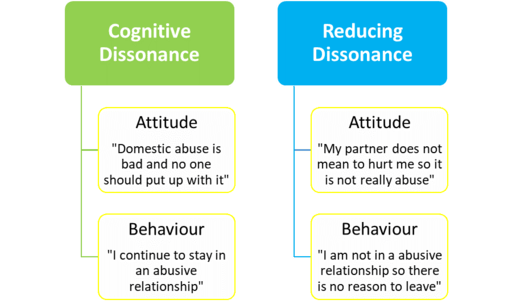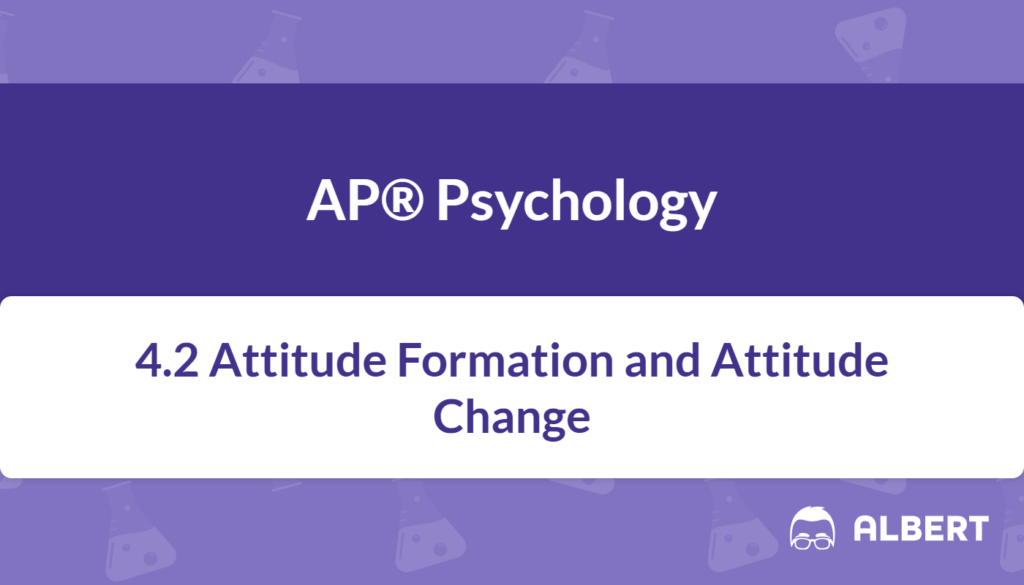What We Review
Introduction
Attitudes shape the way people interpret the world and interact with one another. They are especially important when examining issues like stereotypes, implicit attitudes, and prejudice. Understanding attitude formation and change gives insight into why people hold certain beliefs, how these beliefs can be challenged, and how behavior can be altered. So, what does bias mean in this context? It refers to the influence of attitudes in shaping how we perceive and respond to others.
In psychology, it is crucial to understand key ideas such as stereotypes, implicit attitudes, belief perseverance, and cognitive dissonance. These concepts paint a clearer picture of what drives biased perceptions, prejudiced actions, and the mental discomfort that arises when actions conflict with core beliefs. This post explores each concept in detail and provides examples to illustrate these ideas in everyday scenarios. By the end, readers should recognize how attitudes form, why they sometimes persist, and what motivates people to change them.
Below is a guide to the main topics that will be covered:
- Stereotypes and their role in forming prejudice
- Implicit attitudes that shape behavior without conscious awareness
- Belief perseverance and confirmation bias in holding onto incorrect assumptions
- Cognitive dissonance, which motivates people to reconcile inconsistencies between beliefs and actions
Throughout this article, there are example scenarios with step-by-step explanations, giving practical insights into attitude formation and attitude change.
Understanding Stereotypes
What is a Stereotype?
Stereotypes are generalized beliefs about a group of people. They simplify decision-making by providing mental shortcuts; however, they can lead to overgeneralizations and false assumptions. For instance, someone might think a particular demographic is always talented in sports or lacks certain abilities. These oversimplifications reduce mental effort, but they also pave the way for prejudice.
Stereotypes can become a default way of thinking, especially under stress or time pressure. However, they can affect behavior in subtle ways. An individual might avoid interacting with a group or feel anxious around them based on stereotypes. Therefore, it is crucial to recognize these thought patterns and question their validity.
How Stereotypes Contribute to Prejudice
Stereotypes are often the root cause of prejudice. When people cling to these broad, sometimes exaggerated beliefs, they develop negative attitudes toward an entire group. This can become a habit that feeds on itself: a stereotype leads to biased interpretations of another person’s behavior, reinforcing the original prejudice.
For example, if someone believes that a certain group is “irresponsible,” they might only notice actions that fit this stereotype. Over time, this selective attention strengthens the negative attitude. Recognizing how stereotypes shape perceptions is a major step toward reducing prejudice.
Example Problem
Scenario: An individual assumes all teenagers are reckless drivers based on a stereotype.
Step-by-step explanation:
- The individual hears stories about car accidents caused by young drivers.
- They form a generalized belief that “teenagers are always reckless behind the wheel.”
- This belief becomes a quick filter, ignoring instances where teenagers drive carefully.
- As a result, whenever they see a teenager driving fast, it confirms the “reckless” belief.
- This attitude can lead to prejudiced behavior, such as refusing to carpool with a teen driver.
Understanding how stereotypes link to prejudice encourages people to question initial judgments and look for evidence that challenges these oversimplified views.
Implicit Attitudes
What are Implicit Attitudes?
Implicit attitudes are unconscious beliefs or feelings toward a group, person, or idea. People may not be aware of holding these attitudes, yet they influence behaviors and reactions in subtle ways. These hidden biases can lead one to make choices that support preconceived preferences.
Implicit attitudes may appear in daily habits, workplace decisions, and social interactions. Because they operate under the surface, they are difficult to control. That is why many organizations invest time in awareness programs designed to reveal and address potential biases, promoting more equitable decision-making.
Examples of Implicit Attitudes
A well-known example is the just-world phenomenon, where individuals assume that the world is fair and that people “get what they deserve.” This can cause someone to blame victims for their own misfortunes. Another example is out-group homogeneity bias, where individuals perceive members of an out-group as more similar to each other than they truly are, while seeing the in-group as diverse. Ingroup bias, likewise, involves favoring one’s own group over others in subtle ways.
These implicit attitudes affect day-to-day choices without openly announcing themselves. Because they are hidden, self-reflection and testing (such as taking an Implicit Association Test) can help uncover them.
Example Problem
Scenario: An employer unconsciously favors candidates from their own background.
Step-by-step explanation:
- The employer reviews many applications but unconsciously scans for signals of commonality (e.g., same university).
- Candidates who attended that university automatically seem more qualified, reflecting ingroup bias.
- As a result, the employer offers more interviews to these applicants.
- The employer may not consciously realize this bias, believing the decisions are based on skill.
- When outside observers notice a pattern, it reveals an implicit attitude influencing hiring decisions.
Recognizing such hidden biases can foster fairer employment practices and reduce prejudice.
Belief Perseverance
Understanding Belief Perseverance
Belief perseverance occurs when an individual clings to a belief even if convincing evidence shows it might be incorrect. People experiencing belief perseverance find it hard to let go of deeply held views. This ingrained attitude can come from personal experiences or repeated cultural messages.
Overcoming belief perseverance requires an open mind and willingness to critically analyze new information. Often, it helps to encounter strong, varied sources of evidence that challenge the belief from multiple angles. However, this process can be uncomfortable, as changing a core belief often alters a person’s sense of identity or stability.
Role of Confirmation Bias
Confirmation bias supports belief perseverance by encouraging people to seek and remember information that confirms their existing beliefs. At the same time, it leads them to ignore contradictory details. This creates a reinforcing loop where the belief seems strong, but only because contradictory evidence is brushed aside.
Learning to spot confirmation bias involves questioning one’s initial assumptions and looking for data that does not fit. Asking others for an alternative perspective is another method of broadening one’s outlook and reducing the grip of belief perseverance.
Example Problem
Scenario: A person refuses to accept evidence disproving a long-held belief about a health topic.
Step-by-step explanation:
- The person has believed in a certain supplement’s healing power for many years.
- Studies come out challenging its effectiveness, but the individual quickly dismisses them.
- Confirmation bias leads them to focus on anecdotal success stories while ignoring negative reviews.
- These positive stories reinforce the original attitude, creating belief perseverance.
- As a result, the person continues promoting the supplement and rejects any contradictory evidence.
This example highlights how confirmation bias fuels belief perseverance, making it difficult to alter entrenched attitudes.
Cognitive Dissonance
What is Cognitive Dissonance?
Cognitive dissonance is the mental distress that occurs when a person’s behavior conflicts with a deeply held belief. Recognizing this mismatch is uncomfortable, leading individuals to seek ways to reduce the tension. This concept is vital for understanding attitude change because it often motivates people to align their actions with their beliefs, or vice versa.
For instance, a person who places value on honesty might feel uneasy if they tell a lie. The inner tension pushes them to either justify the lie or correct their action. People naturally avoid prolonged mental discomfort, so they take steps—sometimes subtly and sometimes drastically—to feel consistent again.

Reducing Cognitive Dissonance
People deal with cognitive dissonance in several ways:
- Changing their behavior to match their belief
- Altering the belief to justify the behavior
- Minimizing the importance of the conflict
- Finding support from others who share the behavior
For example, those who promote healthy lifestyles might stop smoking to align their actions with their health-related beliefs. Others might register fewer cigarettes as “not that bad,” thus downplaying the gap between their beliefs and their behavior.
Example Problem
Scenario: A smoker knows smoking is harmful but continues to smoke.
Step-by-step explanation:
- The smoker strongly believes in the importance of health.
- Continuing to smoke directly conflicts with the health-centered belief.
- This conflict creates cognitive dissonance, causing mental discomfort.
- To reduce the discomfort, the smoker might rationalize smoking by saying, “It helps relieve stress.”
- By minimizing the perceived harm, the smoker tempers the dissonance, delaying a full change in behavior.
Being aware of how cognitive dissonance operates can help individuals take a clear-eyed look at the conflicts between their actions and their values.
Conclusion
Attitudes like stereotypes, implicit biases, and long-held beliefs can shape perceptions, interactions, and life choices. Understanding “What Does Bias Mean” is the first step toward recognizing and addressing prejudice. When people remain aware of these influences, they can consciously evaluate and revise their attitudes. Individuals are more likely to prevent harmful judgments, reduce discrimination, and foster positive personal transformation.
Cognitive dissonance also plays a major role in motivating attitude change. When faced with contradictions, individuals are inclined to reduce discomfort by adjusting beliefs or behavior. Therefore, it is beneficial to stay open-minded and welcome constructive feedback when reevaluating ideas. Recognizing the roots of prejudice and the power of dissonance can encourage greater empathy, fairer treatment of others, and wiser decisions.
Reflecting on personal attitudes can be challenging, but it offers a more accurate view of the world. Continual self-examination, aided by awareness of implicit biases and belief perseverance, can lead to healthier relationships and communities.
Quick Reference Chart
| Vocabulary | Definition |
| Stereotype | A generalized belief about a group of people. |
| Implicit Attitude | An unconscious attitude towards a group that one may not acknowledge. |
| Prejudice | A negative attitude towards a group based on stereotypes. |
| Cognitive Dissonance | Mental discomfort experienced when actions and beliefs are in conflict. |
| Belief Perseverance | The tendency to hold onto a belief despite evidence suggesting it is inaccurate. |
| Confirmation Bias | The tendency to favor information that confirms existing beliefs. |
By learning about stereotypes, implicit attitudes, and the forces that keep flawed beliefs in place, it is possible to take practical steps toward more balanced thinking. Recognizing belief perseverance and cognitive dissonance helps in making thoughtful decisions and forming attitudes rooted in fairness and accuracy. In the end, understanding these processes can encourage a shift toward less prejudice, better problem-solving, and healthier social interactions.
Sharpen Your Skills for AP® Psychology
Are you preparing for the AP® Psychology test? We’ve got you covered! Try our review articles designed to help you confidently tackle real-world AP® Psychology problems. You’ll find everything you need to succeed, from quick tips to detailed strategies. Start exploring now!
- Humanistic Psychology: AP® Psychology Review
- Social Cognitive Theory: AP® Psychology Review
- Trait Theory of Personality: AP® Psychology Review
Need help preparing for your AP® Psychology exam?
Albert has hundreds of AP® Psychology practice questions, free response, and full-length practice tests to try out.








